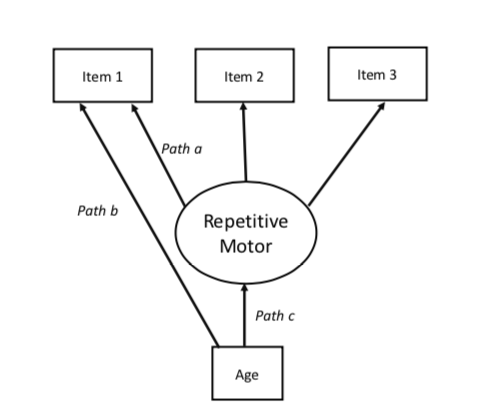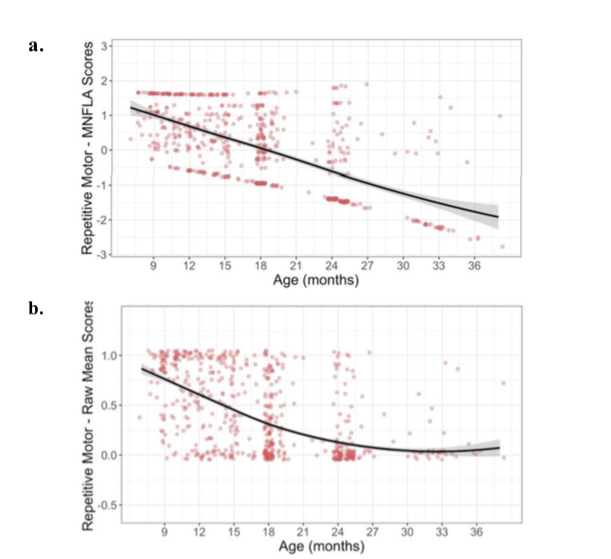Abstract
Background. Restricted and repetitive behaviors (RRBs) are core features of autism spectrum disorder (ASD) and one of the earliest behavioral signs of ASD. However, RRBs are also present in typically developing (TD) infants, toddlers, and preschool-aged children. Past work suggests that examining change in these behaviors over time is essential to distinguish between normative manifestations of these behaviors and behaviors that denote risk for a neurodevelopmental disorder. One challenge in examining changes in these behaviors over time is that most measures of RRBs have not established longitudinal measurement invariance. The aims of this study were to (1) establish measurement invariance in the Repetitive Behavior Scales for Early Childhood (RBS-EC), a parent-report questionnaire of RRBs, and (2) model developmental change in RRBs from 8 to 36 months. Methods. We collected RBS-EC responses from parents of TD infants (n = 180) from 8 to 36 months (n = 606 responses, with participants contributing an average of 3-time points). We leverage a novel methodological approach to measurement invariance testing (Bauer, Psychological Models, 2017), moderated nonlinear factor analysis (MNLFA), to determine whether the RBS-EC was invariant across age and sex. We then generated adjusted factor score estimates for each subscale of the RBS-EC (repetitive motor, self-directed, and higher-order behaviors), and used linear mixed effects models to estimate between- and within-person changes in the RBS-EC over time. Results. The RBS-EC showed some non-invariance as a function of age. We were able to adjust for this non-invariance in order to more accurately model changes in the RBS-EC over time. Repetitive motor and self-directed behaviors showed a linear decline from 8 to 36 months, while higher-order behaviors showed a quadratic trajectory such that they began to decline later in development at around 18 months. Using adjusted factor scores as opposed to unadjusted raw mean scores provided a number of benefits, including increased within-person variability and precision. Conclusions. The RBS-EC is sensitive enough to measure the presence of RRBs in a TD sample, as well as their decline with age. Using factor score estimates of each subscale adjusted for non-invariance allowed us to more precisely estimate change in these behaviors over time.
Publication
Journal of Neurodevelopmental Disorders
An individual's response to item 1 is due to the underlying latent construct of repetitive behaviors (path a) as well as an age moderator (path b). Path c represents the factor loading on item 1 after adjusting for the moderator. |
Best-fitting model estimates for Repetitive Motor scores plotted over raw data for a) MNLFA-derived factor score estimates (adjusted for bias) and b) raw mean scores. The model outcome for the raw mean score is converted to probability, as a logistic linking function was used. Y-axes for both plots are scaled with limits of mean outcome +/- 2.5 SDs. |

